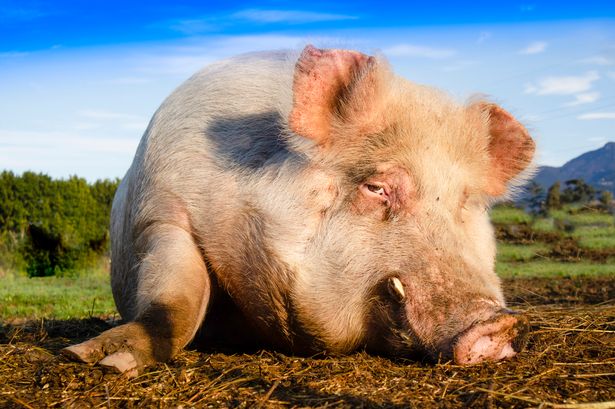Science
Groundbreaking Pig Liver Transplant Marks New Era in Medicine

A team of medical professionals in China has achieved a significant milestone in transplant medicine by successfully implanting a pig liver into a human patient. This landmark procedure, described as a “pivotal step forward,” represents the first time a genetically modified pig liver has been used for therapeutic purposes in a living human.
The patient, a 71-year-old man, had been suffering from irreversible liver scarring due to a hepatitis B infection and liver cancer, making him ineligible for a traditional human liver transplant. Following the procedure, he lived for 171 days before succumbing to complications.
Details of the Procedure
The groundbreaking transplant involved an “auxiliary graft” from a genetically engineered Diannan miniature pig. Researchers had modified the pig’s genes to enhance compatibility with human biology. Initial assessments indicated that the graft functioned effectively for the first month. However, by day 38, the patient experienced complications associated with the transplant, specifically a condition known as xenotransplantation-associated thrombotic microangiopathy (xTMA).
Although treatment addressed the xTMA, the patient ultimately passed away, highlighting both the potential of xenotransplantation and the challenges that remain. Dr. Beicheng Sun, the lead investigator, stated, “This case proves that a genetically engineered pig liver can function in a human for an extended period. It is a pivotal step forward, demonstrating both the promise and the remaining hurdles, particularly regarding coagulation dysregulation and immune complications, that must be overcome.”
Implications for Future Transplants
Experts view this development as a critical advancement in hepatology. Dr. Heiner Wedemeyer, co-editor of the Journal of Hepatology, commented, “This report is a landmark in hepatology. It shows that a genetically modified porcine liver can engraft and deliver key hepatic functions in a human recipient.” He emphasized that while the procedure opens new pathways for treating patients with acute liver failure and hepatocellular carcinoma, significant biological and ethical challenges persist.
Xenotransplantation, the process of transplanting organs from animals to humans, has faced hurdles related to immune rejection for over four decades. Pigs have emerged as the most promising donor animals due to their organ size and genetic similarities to humans. Recent advancements in gene-editing technology, combined with improved methods to suppress the human immune response, have generated optimism regarding the future of these transplants.
This case builds upon previous efforts in xenotransplantation, including the first heart transplant from a genetically modified pig, performed at the University of Maryland Medical Centre in 2022. The recipient, David Bennett, passed away two months post-surgery. Similarly, another patient, Richard Slayman, underwent a kidney transplant at Massachusetts General Hospital last year and died nearly two months later.
As research continues, the medical community remains hopeful that further developments in xenotransplantation can lead to safe and effective treatments for patients facing severe organ failure, marking the beginning of a new era in transplant medicine.
-

 Health3 months ago
Health3 months agoNeurologist Warns Excessive Use of Supplements Can Harm Brain
-

 Health3 months ago
Health3 months agoFiona Phillips’ Husband Shares Heartfelt Update on Her Alzheimer’s Journey
-

 Science1 month ago
Science1 month agoBrian Cox Addresses Claims of Alien Probe in 3I/ATLAS Discovery
-

 Science1 month ago
Science1 month agoNASA Investigates Unusual Comet 3I/ATLAS; New Findings Emerge
-

 Science4 weeks ago
Science4 weeks agoScientists Examine 3I/ATLAS: Alien Artifact or Cosmic Oddity?
-

 Entertainment4 months ago
Entertainment4 months agoKerry Katona Discusses Future Baby Plans and Brian McFadden’s Wedding
-

 Science4 weeks ago
Science4 weeks agoNASA Investigates Speedy Object 3I/ATLAS, Sparking Speculation
-

 Entertainment4 months ago
Entertainment4 months agoEmmerdale Faces Tension as Dylan and April’s Lives Hang in the Balance
-

 World3 months ago
World3 months agoCole Palmer’s Cryptic Message to Kobbie Mainoo Following Loan Talks
-

 Science4 weeks ago
Science4 weeks agoNASA Scientists Explore Origins of 3I/ATLAS, a Fast-Moving Visitor
-

 Entertainment4 months ago
Entertainment4 months agoLove Island Star Toni Laite’s Mother Expresses Disappointment Over Coupling Decision
-

 Entertainment3 months ago
Entertainment3 months agoMajor Cast Changes at Coronation Street: Exits and Returns in 2025









